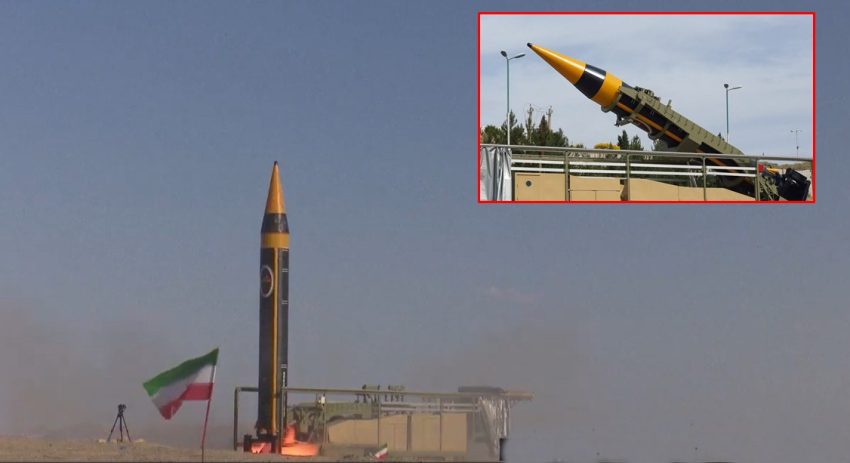TEHRAN – In wake of recent Israeli airstrikes targeting key Iranian military leaders and nuclear facility, Tehran issued stark warning of retaliation. Islamic Revolutionary Guard Corps (IRGC) announced that the advanced Kheibar Shekan missiles will soon be launched at Israeli targets, promising a response that will shock the world.
Kheibar Shekan, which is Iran’s most sophisticated medium-range ballistic missiles. is said to evade interception with its maneuverable re-entry vehicle and satellite guidance systems. These missile are most advanced medium-range ballistic missiles, posing serious threat to Israel.
Kheibar Shekan Missile
These missiles have range of up to 1,300 kilometers and are capable of striking deep inside Israel and potentially neighboring countries. Solid-propellant rocket motor, allowing for quicker launch preparation and enhanced mobility compared to liquid-fueled missiles.
These are equipped with satellite navigation and maneuverable re-entry vehicle (MaRV) technology. This allows the missile to adjust its trajectory during flight, improving accuracy and making interception more difficult.
Kheibar’s re-entry vehicle features control fins and can perform atmospheric maneuvers to evade missile defense systems such as Israel’s Iron Dome, David’s Sling, and Arrow interceptors. It can carry conventional or possibly precision-guided warheads, designed to target strategic military bases and infrastructure.
Unlike older missiles, Kheibar Shekan’s maneuverable warhead reduces the effectiveness of current missile defense systems. Iran claims that an upgraded variant, named Fattah, is capable of flying hypersonic trajectories, which would further reduce reaction time and complicate interception efforts.
Iran utilized its newly developed ballistic missile, the Kheibar, for the first time in night attacks against Israel, which has a payload capacity of up to 1,500 kg of explosives. I hope it's not the one intercepted outside of the earth's atmosphere by THAAD. pic.twitter.com/Fj3qmKVg03
— Mukoma (@MukomaIcho) June 14, 2025
The missile is typically transported and launched using mobile platforms disguised as commercial trucks, enhancing survivability and complicating detection efforts by enemy intelligence and surveillance.
Iran’s underground missile facilities allow it to maintain a dispersed and hardened missile force. This mobility and concealment make preemptive strikes difficult and give Iran the capability to launch a rapid salvo of missiles if necessary.
Kheibar Shekan missile played key role in Iran’s previous missile campaigns against Israel, such as the “True Promise” operations, where hundreds of missiles were launched in coordinated attacks. Though Israel intercepted many of these missiles, several still managed to hit strategic military bases.
With Israel’s missile defenses stretched thin by repeated attacks, the threat posed by Kheibar Shekan remains pressing concern. The missile’s advanced technology and mobility increase its potential to bypass defense systems and cause significant damage.
Amid recent clashes, Iran made clear that the country’s security is a non-negotiable red line and vowed a decisive response to any aggression.
Iran’s fresh missile strikes kill 4, injure dozens in Israel as fighting escalates













